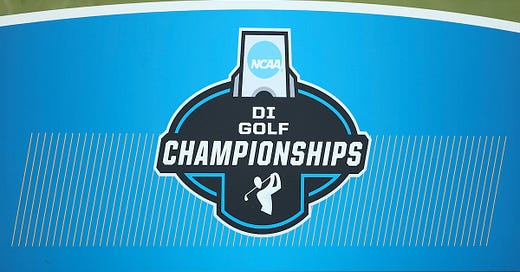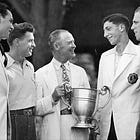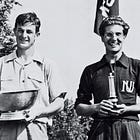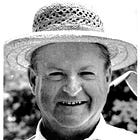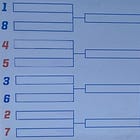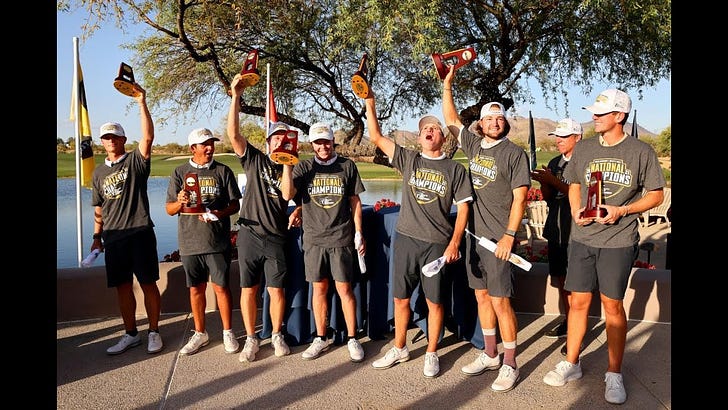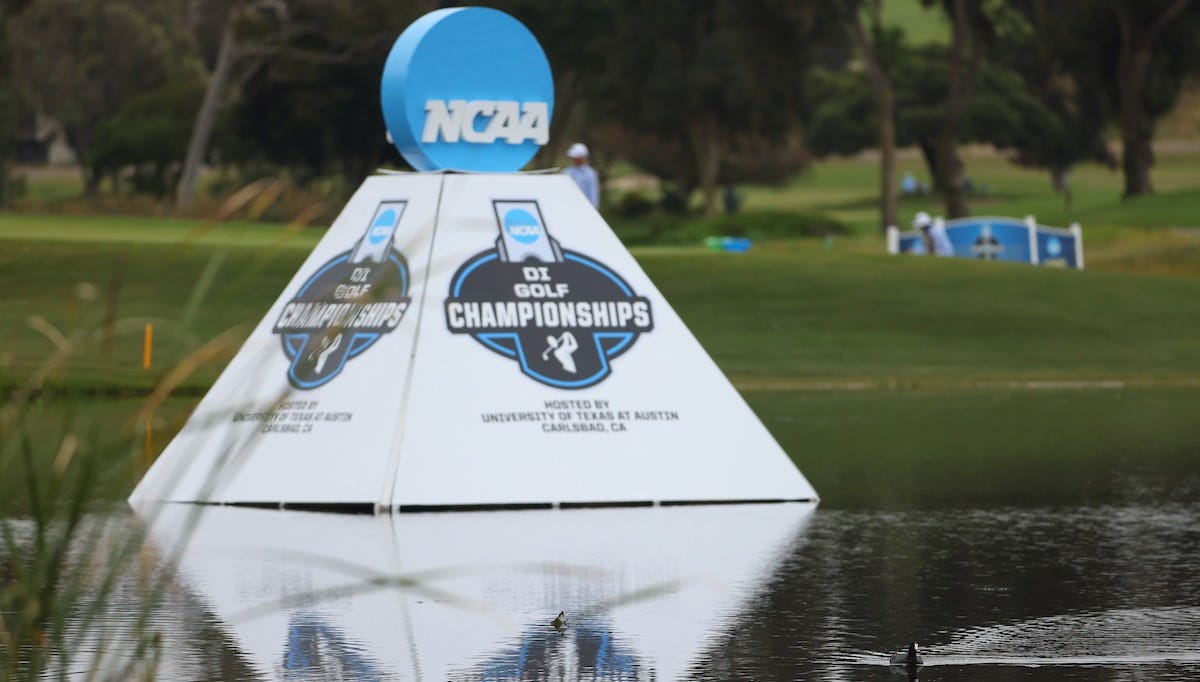Golf is singular among the many NCAA sports in the impact that the location has on the outcome of the championship. Yes there is the weather element, just like all other outdoor sports have to deal with, but even the non-uniform dimensions of baseball/softball fields doesn’t compare to the uniqueness of each golf course. Adapting to a changing host venue each year has just been par for the course as far as collegiate golfers are concerned, however in recent years the NCAA Golf Committee along with various coaches and interested parties has sought to change the nomadic nature of the championship and plant their flagstick firmly in one plot of (very nicely manicured) land.
Some worry about the break in tradition and potential unfairness this may unintentionally cause while others maintain this will create stability and establish a new haven for college golf programs and fans alike. Let’s explore the history leading up to the recent changes and see if the vision for the future is as positive as advertised.
NOTE to email subscribers: you can read this entire article HERE
*NOTE: underlined text provides a link to references or sites with more information
BEFORE NCAA [1897-1938]
Not only does college golf extend back further than the first NCAA championship in 1939, it actually predates the NCAA itself (1906). Like many other sports, it started in the Ivy League schools when the sons of famous golf names of the past - Havemeyer, Reid, and others less well-known today - took up the offer from the chairman of the golf committee at Ardsley Casino (Golf Club) to get together at their course for a championship match between teams from Yale, Harvard, Columbia, Princeton, and Penn. (Reverend) Dr. Roderick Terry not only spurred on the creation of the championship but also the creation of the first governing body, the Intercollegiate Golf Association (IGA). To further legitimize the championship, Dr. Terry offered up an incredibly expensive trophy - recently rediscovered in Harvard’s archives - on the condition that the championship would be held at their club for the first three years.
Thus collegiate golf was born and, after those first three championships, was on the move to different courses each year. For the next four decades the sport would continue to grow in both membership and attendance as teams were formed at colleges and universities across the U.S. Eventually the student-run IGA was drawn into the fold of the USGA in the 1930s, which accomplished two major goals: stabilize the leadership of the championship and help secure the host sites.
By this point, more colleges than ever were sending players to compete for team and/or individual titles, however it remained predominantly an Eastern and Central time zone event. Although the early years of the collegiate championship are often overlooked, this tournament was regarded as an important part of the amateur calendar and held at a rotating selection of iconic venues including Garden City, Myopia, Nassau, Baltusrol, Oakmont, Merion, Olympia Fields, and Congressional.
NCAA TRANSITION [1939-46]
The NCAA's takeover of intercollegiate golf was less a birth of the sport and more a catalyst that opened the floodgates to fully realize its competitive potential. Although the NCAA apparently had toyed with the idea of hosting its own version of a golf championship prior to the 1930s, it got serious about leading the existing event around 1935 and officially assumed organizational responsibilities from the USGA in early 1939.
1939 Championship
A record 192 entrants representing NCAA member colleges from coast-to-coast made their way to Des Moines, IA to compete in that first NCAA championship. The man tapped to lead the newly-established NCAA Golf Championship Committee was none other than the legendary Chick Evans, who ironically had been prevented from competing in the collegiate championship during his short time at Northwestern nearly three decades prior. Evans collaborated closely with representatives of the host Wakonda Club and Iowa State’s legendary coach Hugo Otopalik to help launch this new era of collegiate championship golf on a strong and successful note.
1940 Championship Controversy
Excitement for the NCAA’s second championship was at an all-time high. The championship was slated to return to Ekwanok CC (Vermont), which had hosted only one time prior, in 1912. The campaign to bring the collegiate tournament back to Ekwanok was masterminded by the charismatic CEO of the Beech-Nut Company, Mr. Bartlett Arkell, who had done much for his home club over the years. The tournament he helped put on in 1940 was another huge success for the NCAA and Arkell left his lasting legacy with the donation of the (now lost) “Chick Evans Bowl”, a perpetual trophy awarded to the individual champion each year to (literally) etch their name in history.
The only problem with this rosy picture is one major inconvenient truth: the championship had apparently been promised to another club, Hartford GC (Connecticut). It seems that perhaps Mr. Arkell had altered the plans by offering something (like maybe a new ~$2k trophy??) to change the minds of Chick Evans’s golf committee. At worst this was a bad look for the NCAA, even still it earned a rebuke from the USGA and likely played a pivotal role in how championship sites were selected going forward.
1941 Championship(s) at Ohio State
A month and a half before the championship at Ekwanok, Ohio State’s much anticipated courses opened to great fanfare with a dedication ceremony that included an interesting foursome exhibition match consisting of Robert Kepler (Ohio State golf coach), Blanche Sohl (member of Ohio State physical education staff), Chick Evans, and Patty Berg (celebrated young women’s national amateur champion). Ohio State hosted the Big Ten championship at the Scarlet course the following week, proving the venue was suitable for big time collegiate events. Based on Evans’s participation and the events of the 1940 championship, it’s not hard to connect the dots on the reason for Ohio State hosting in 1941 and establishing the tradition that a school would formally host each championship going forward at their home course.

Enough cannot be stated about the Ohio State athletic department’s hard work leading up to the 1941 NCAA championship. Not only did they set a precedence for host institutions for the NCAA men’s championship going forward, it also presented an opportunity for the establishment of women’s collegiate golf. Through sheer determination, Gladys Palmer, Mary Yost, and others in the OSU Physical Education Department spearheaded the women’s championship, an event that might not have occurred for years, or even decades to come, without their efforts.
The War Years [1942-46]
As was the case with practically every other sporting endeavor, college golf took a back seat to global events during World War II. While women’s golf was shuttered for a time - the same way the men’s event had been during WWI - the NCAA men’s championship managed to stay afloat despite participants getting down to just five teams in the last years of the war. Notre Dame, Illinois, and Ohio State stepped up to keep things going for collegiate athletes who soon found themselves fighting for their lives on foreign battlefields. By the summer of 1946, the men’s championship had largely returned to normal and the women’s championship had been revived - thanks again to the incredible persistence of the Ohio State staff.
ON THE ROAD [1947-2019]
Following WWII, college golf experienced a similar boom in popularity as seen in other sports throughout the country. The next several decades would see unprecedented growth bolstered by the fact that once again college golfers were winning major amateur tournaments while still in school. This era for the men’s competition would give rise to a myriad of legendary players including many - Arnold Palmer, Jack Nicklaus, and too many others to name here - who are still revered today as some of the best to ever play the game. Women’s collegiate golf also picked up in earnest once it gained solid traction, producing its own stable of legends from many of the founders of the LPGA tour to later household names such as JoAnne Gunderson-Carner, Nancy Lopez, Julie Inkster, and many more!
“We can win anywhere”
Once the NCAA men’s championship got rolling again after WWII, they instilled a bid process where teams could submit their proposal to host a championship approximately two years from the submission period. Although there were regulars in the rotation such as Ohio State, Stanford, and Broadmoor (Colorado Springs), this gave an opportunity to experience different tests across the country in front of different hometown fans. Each year brought a new set of challenges with different course layouts and even grass types. The one seeming constant was the weather; hardly a championship went by without being impacted by rain or other weather-induced delays. This is the downside of an outdoor sport, so it was just something to live with.
Despite the changing venues, dynasties appears such as Coach Fred Cobb’s North Texas State Eagles, Coach Dave Williams’ Houston Cougars, and Coach Mike Holder’s Oklahoma State Cowboys. The record book is filled with the names of coaches who taught/recruited well (sometimes both!) and got their teams ready for glory no matter which time zone they were driving to. These treks became as much a part of college golf tradition as the passing of the perpetual trophies.
The Women’s Championship Finds Footing
Much the same was as it was for the men, women’s collegiate golf history prior to the NCAA takeover (1982) is a bit muddled. It’s understandable that the NCAA would want to emphasize their own history over any predecessors, however it’s important to realize (and recognize) that college golf did not begin the day the uniform wooden trophies containing NCAA medallions were handed out.
By 1951, a combination of mounting financial burden and internal division brought Ohio State to the point where they had no choice but to let the Women’s Collegiate Golf Tournament (championship) find a home away from the Scarlet Course. With no permanent solution lined up or even a firm plan in place for deciding future host sites, the tournament drifted for a few years, being kept afloat by unlikely college institutions. Eventually, and again through sheer will, it found its footing and created an organizational structure that that was not dissimilar from the NCAA and saw the competition move to different locations each year.
AIAW and the NCAA
By the early 1970s, a series of incrementally more specialized organizations finally brought about creation of the Association for Intercollegiate Athletics for Women (AIAW). Over 30 years after the Ohio State Physical Education staff made their initial push for a “Women’s NCAA”, the AIAW was created to fulfill that very role in leading women’s collegiate sports into the realm of fully organized competitive athletics. This structure along with the federal regulations known as Title IX brought an incredible influx of new opportunities for women.
It is at this point, after years of fighting against governing women’s athletics, the NCAA voted in the early 1980s to start offering its own women’s collegiate championships for sports including golf. In a gross oversimplification of events (please read the post below for more nuanced details!), this decision by the NCAA quickly led to the downfall of the AIAW as colleges and universities who were already NCAA members in men’s sports got on board for women’s sports too. Now the processes and procedures that governed the golf championships, including selecting the different sites, were largely in sync.
New Format and TV Coverage
Both the men’s and women’s NCAA golf tournaments continued to run in parallel - but not quite in tandem - from the 1980s into the 2010s. Although there were many cases of overlap in the venues hosting one or the other championship, those always occurred different years.
In 2009, men’s Division I (D1) golf adopted a radical new method of determining the team champion, creating a bracket of the top 8 teams from the stroke play competition - which determined the individual champion - who would then compete in team matches where each of the 5 players would play 1v1 matches worth a point, first to 3 points advancing. While debatable in determining the “best” champion, the larger goal for this format was to better lend itself to the tv viewing experience. The NCAA began offering a stream of select portions of the championship in 2012, and excitement began to grow.
The 2015 championship marked an important point in D1 college golf as not only did the women’s championship adopt the same format as the men, they made an even more fundamental change that facilitated the ability for Golf Channel to offer broadcast coverage of both championships. For the first time, the women’s and men’s championships were held back-to-back at the same venue: the Concession Club in Bradenton, FL. For the next five championships (2015-19), the Golf Channel continued to build out its tv coverage of first the women’s and then the men’s championship at Concession, Eugene CC, Rich Harvest Farms, Karsten Creek, and the Blessings GC.
THE STABILITY EXPERIMENT [2020-2023]
In 2017, the NCAA golf committee put into motion a plan to provide more stability to the championships by having one site host three years in a row. Since one of the hopes was to avoid major weather pitfalls, the first site to try this experiment was likely going to be one in a warm climate near the west coast. Grayhawk Golf Club, home course for Arizona State, is a top course in a prime location, making for a great place to host the 2020-2022 championships.
Instead of making the trip out to Arizona, players ended up all going home in March 2020 as sports of all levels were shut down by the COVID-19 pandemic.
With the first year cancelled, that three-year window shifted to 2021-2023. Over the course of those three championships, competitors, broadcasters, and viewers became more acclimated with the nuances of Grayhawk and developed strategies on what it would take to be successful. Being in the Pacific time zone, the telecast was able to fit in that crucial “prime time” window to attract more viewers. Furthermore, the weather was never a factor outside of the (sometimes concerning) heat, but tournament officials and all of the many wonderful people behind the scenes were there to offer water and anything else possible to make the whole tournament a high-class success.
The one glaring downside was the perceived competitive advantage that teams like Arizona State had considering how many more times they had played the course. The stress of being the hometown favorite can often be overwhelming, and although the men’s and women’s ASU teams did make match play, they ultimately fell short of winning the title and (mostly) nullifying discussion of this downside.
A PLACE TO REST THE CLUBS [2024-??]
Having proved that returning to a single site was a viable option, the NCAA Championship Committee sought to find the next venue willing to dedicate the substantial time and resources into hosting for the next three seasons (2024-26). Others had a more permanent solution in mind.
College Golf’s World Series
One of my favorite non-fiction books is Ryan McGee’s Road to Omaha about college baseball’s College World Series. In the book, McGee interweaves his experience at the 2008 CWS with the history of the championship to instill a sense of connection with the past of a championship the reader might not have even known about prior to picking up the book. The goal of every baseball team was to navigate Regionals and Super Regionals in order reach the hallowed grounds in Omaha, Nebraska. In a very real sense, the destination is the journey.
Texas men’s head coach John Fields has expressed his passion for taking that same concept and applying a it college golf. You can hear the sincerity he has while speaking on the topic, such as on Coach McGraw’s Better Than I Found It podcast (below). Beyond just finding a suitable location that checks all of the boxes including nice weather, availability, and good for broadcasting, Coach Fields hits on the idea of cultivating a connection with college golf’s past in a way that hasn’t been a part of the sport since phasing out the old traveling trophies.
If You Build It…
In order to make this dream of a permanent destination site for the D1 men’s and women’s college golf championships, the contengent of Coach Fields and others - including Texas AD Chris Del Conte, retired Oklahoma State Coach/AD Mike Holder, and leadership at Omni La Costa - had to take several practical but daunting steps. The College World Golf Championship Foundation (CWGCF) was founded in order to facilitate helping to run the championships as well as establishing an endowment that would “…[ensure] the perpetual success and legacy of the NCAA D1 Golf Championships.” Coach Fields discusses a myriad of reasons Omni La Costa near San Diego, CA was ultimately selected, not least of which was the connection to the history of hosting the PGA Tour’s Tournament of Champions for four decades followed by the first several years of the World Golf Championship match play events.
While Coach Fields and the CWGCF didn’t have to build their site from scratch, there was a very significant renovation done by Gil Hanse and Jim Wagner that cost north of $20 million! Despite very real fears that the course would not be ready in time, everything eventually came together for La Costa to host the 2024 NCAA championships.
The course is considered a neutral site since it doesn’t host any other collegiate tournaments and Texas is the host university due primarily to the NCAA rule requiring one along with the fact other nearby institutions didn’t want to assume the risks early on.
Golf Digest’s Tod Leonard has written several fantastic articles on the subject which you can read HERE and HERE
Extension to 2028
Just a few months after the 2024 championships - generally regarded as a major success by coaches, players, and media members - the NCAA announced that it was granting a further two year hosting extension to La Costa out to the 2028 championships. This extension signaled the realistic possibility of La Costa becoming the permanent home of D1 college golf championships.
By the conclusion of the 2028 championships, that will make La Costa third site on the men’s side to host 5 times (Garden City and Broadmoor) and the second on the women’s side (Georgia). At that point it will only trail Ohio State in number of times hosting, a combined 14 times for the men and women just in the NCAA era!
A Vision for the Future
With year two bringing improvements to an already high-class championship as well as securing both an endowment and the NCAA’s by-in, all of the pieces are falling into place for the vision to become a long-term (if not permanent) reality. Maybe soon we’ll have the opportunity to write the Road to Omni La Costa book and help connect college golf’s nomadic past with its rooted future.
Thanks for reading! What are your thoughts on the planned permanent home of college golf championships and the vision of the CWGCF? Leave a comment below or send me a message, I’d love to hear from you!

